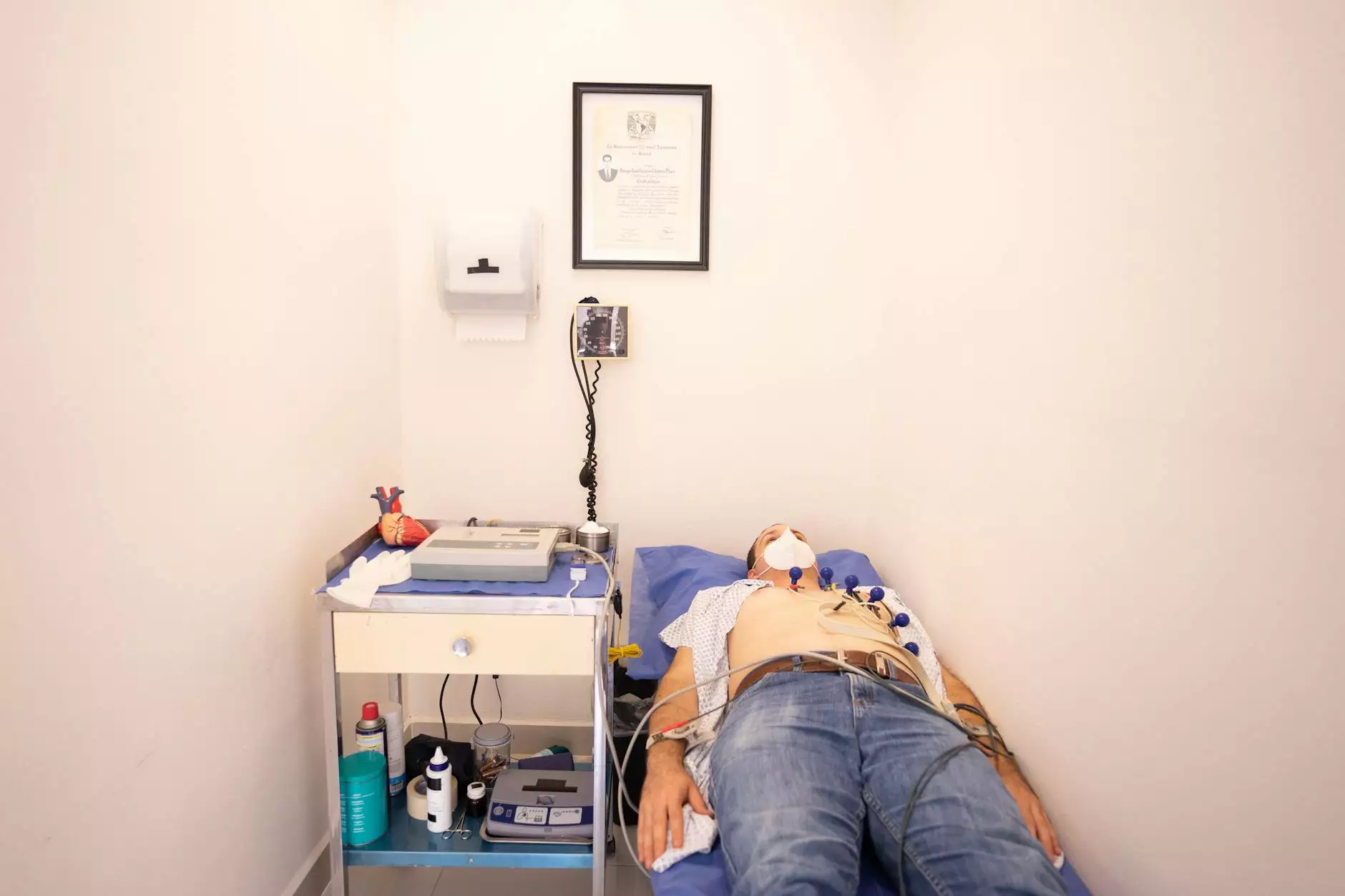Understanding Sudden Swollen Ankles: Causes, Treatments, and Prevention

Sudden swollen ankles can be an alarming symptom that many people experience at some point in their lives. It is important to understand the underlying causes, available treatments, and preventive strategies to manage this condition effectively. This article aims to provide comprehensive insights into sudden swollen ankles, ensuring that you have the knowledge to seek appropriate care.
What Are Sudden Swollen Ankles?
Sudden swollen ankles refer to the noticeable increase in size of one or both ankles that occurs unexpectedly. This condition can range from mild swelling, which might be easily dismissed, to severe swelling that indicates a serious medical issue. The swelling usually occurs due to excess fluid accumulation in the tissues surrounding the ankles.
Common Causes of Sudden Swollen Ankles
Understanding the causes of sudden swollen ankles is crucial for effective treatment. Here are some of the most common reasons:
1. Injury or Trauma
Injuries such as sprains or fractures can lead to swelling in the ankle region. When the tissues around the ankle sustain damage, the body responds by increasing blood flow to the area, which results in swelling.
2. Infections
Infections can also cause sudden swollen ankles. Conditions such as cellulitis, which is a bacterial infection of the skin and underlying tissues, can lead to significant swelling and requires prompt treatment.
3. Venous Insufficiency
Chronic venous insufficiency occurs when the veins are unable to effectively return blood to the heart, resulting in fluid pooling in the lower extremities. This condition can lead to sudden swelling, especially after prolonged periods of standing or sitting.
4. Heart, Kidney, or Liver Issues
More serious underlying health conditions can cause sudden swelling. Congestive heart failure, for example, can cause fluid buildup due to impaired heart function. Kidney diseases can affect the body’s ability to regulate fluid, resulting in swelling. Similarly, liver problems can impact fluid balance and lead to edema.
5. Allergic Reactions
Severe allergic reactions can also result in swelling, as the body releases histamines and other chemicals in response to perceived threats. This can lead to localized swelling in the ankles and other areas.
6. Medications
Certain medications can cause side effects that include fluid retention and swelling in the ankles. Common culprits include steroids, non-steroidal anti-inflammatory drugs (NSAIDs), and medications for high blood pressure.
Signs and Symptoms to Watch For
While swollen ankles might seem straightforward, it’s important to observe accompanying symptoms to determine the seriousness of the situation. Key signs and symptoms include:
- Redness or Warmth: Indicates potential infection.
- Pain or Tenderness: May suggest injury or deep vein thrombosis.
- Difficulty Breathing: Requires immediate medical attention, especially if it follows leg swelling.
- Weight Gain: Sudden weight gain may indicate fluid retention.
When to Seek Medical Attention
If you experience sudden swollen ankles along with any of the aforementioned symptoms, it is crucial to seek medical attention promptly. Early intervention can prevent complications and address underlying health issues before they escalate.
Diagnosis of Sudden Swollen Ankles
Diagnosing the cause of swollen ankles typically involves a thorough medical evaluation. Your healthcare provider may perform the following:
1. Medical History Review
Your doctor will inquire about your medical history, including any recent injuries, medications you are taking, and other health conditions that may contribute to swelling.
2. Physical Examination
A hands-on examination of the affected area will help your doctor assess the severity of the swelling and check for signs of infection or injury.
3. Imaging Tests
X-rays or ultrasounds may be ordered to rule out fractures or assess venous conditions.
4. Blood Tests
Blood tests can evaluate kidney, liver, and heart function, helping to uncover systemic problems that may contribute to swelling.
Treating Sudden Swollen Ankles
Treating swollen ankles effectively depends entirely on its underlying cause. Here are some treatment options:
1. Rest and Elevation
If the swelling is due to an injury, resting the affected area and keeping it elevated can help reduce swelling. This allows gravity to assist in fluid drainage.
2. Compression Therapy
Wearing compression stockings can help improve circulation and reduce swelling, especially for those with venous insufficiency. These stockings apply consistent pressure to the legs, promoting blood flow back to the heart.
3. Medications
If swelling is caused by an underlying condition, your doctor may prescribe specific medications. This may include diuretics to help eliminate excess fluid in the body or antibiotics for infections.
4. Lifestyle Modifications
For chronic issues, lifestyle changes can have a significant impact. Maintaining a healthy weight, exercising regularly, reducing salt intake, and staying hydrated can all help manage or prevent swollen ankles.
5. Surgery
In some cases, surgical intervention may be necessary, particularly if there are venous issues that cannot be managed with conservative treatments. Procedures that improve vein function can prevent swelling from becoming a chronic issue.
Preventing Sudden Swollen Ankles
Prevention is always better than cure. Here are some practical tips to help minimize the risk of experiencing sudden swollen ankles:
1. Stay Active
Regular exercise promotes good circulation and helps prevent fluid buildup in the lower extremities. Aim to incorporate walking, swimming, or cycling into your routine.
2. Manage Health Conditions
If you have chronic conditions such as hypertension, diabetes, or heart disease, managing these effectively can significantly reduce the risk of complications like swollen ankles.
3. Avoid Prolonged Sitting or Standing
If your job requires long hours of sitting or standing, make it a habit to take regular breaks to walk around and stretch. Simple ankle exercises can also stimulate circulation.
4. Wear Comfortable Footwear
Supportive footwear can alleviate excess pressure on your feet and ankles, which may help reduce swelling. Avoid shoes that are too tight or constrict blood flow.
5. Stay Hydrated
Drinking enough water helps your body maintain a healthy fluid balance and can prevent fluid retention.
Conclusion
In conclusion, understanding and addressing sudden swollen ankles is crucial for maintaining overall health and well-being. By recognizing the signs and symptoms, identifying potential causes, and implementing appropriate treatments and prevention strategies, you can manage this condition effectively. Always consult with a healthcare professional if you have concerns about your symptoms to ensure you receive the best possible care.
For expert advice and treatment, consider consulting specialists in vascular medicine. Knowledgeable professionals can guide you in the right direction based on your personal health needs. Don't wait for the situation to worsen; take action today and prioritize your health.









